Body of water even has a connection to the creatures’ traditional role in Japanese mythology.
Japan’s high-tech, high-speed trains and convenient overnight buses are great ways to get about the country, but it also has an extensive domestic air travel network. Seeing the country from the air can be a real treat, since between its distinct coastlines and compact size it’s easy to pick out landmarks such as cities, islands, and dragons.
Yep, when Japanese Twitter user @chicago0812 was recently flying over Shikoku, the smallest of Japan’s four main islands, he glanced out the window and was met with the image of a majestic mythical serpent.
▼ “There’s seriously a dragon in Shikoku!”
四国にマジでドラゴンいた!! pic.twitter.com/twzBZyNu2J
— 登龍亭獅篭iPhoneでシカゴは一発変換 (@chicago0812) September 1, 2017
Of course, this isn’t a real actual dragon, but a twisting body of water in Kochi Prefecture that happens to look just like the fantasy monster.
The dragon’s tail and body are actually the serpentine Yoshino River, a 194-kilometer (121-mile) waterway that flows from Mt. Kamegamori to Lake Sameura, which forms the dragon’s head.
Still, the uncanny resemblance got Twitter users excited, drawing comparisons to such famous fictional characters as Spirited Away’s Haku, Dragon Ball’s Shen Ron, and Pokémon’s Gyarados.
However, while legends often speak of dragons living in ancient times, the one in @chicago0812’s photo only came into being recently. While the Yoshino River has existed for centuries, Lake Sameura owes its shape to Sameura Dam, which was constructed in 1975.
▼ The lake is a popular tourist destination, with a cycling course lined with 2,000 sakura cherry blossom trees.
This means that we’ll have to give up on our fantasy that long ago a dragon passed away in Shikoku, and when the rains fell on its final resting place, they formed the geographic feature seen in @chicago0812’s snapshot. However, there’s still a mythological connection to be made.
While dragons are typically presented as fire-breathers in Western folklore, in Japan the element they’re most commonly associated with is water, with tales crediting the creatures with causing rainfall in ancient times. As fate would have it, Lake Sameura is a functioning reservoir, and in addition to hydroelectric power from its dam, it also supplies the local communities with drinking and irrigation water, meaning that Shikoku’s dragon is still providing water for the island’s people.
Related: Sameura Dam (Visit Kochi)
Source: Kinisoku, Twitter/@chicago0812
Insert images: Google (1, 2), Visit Kochi

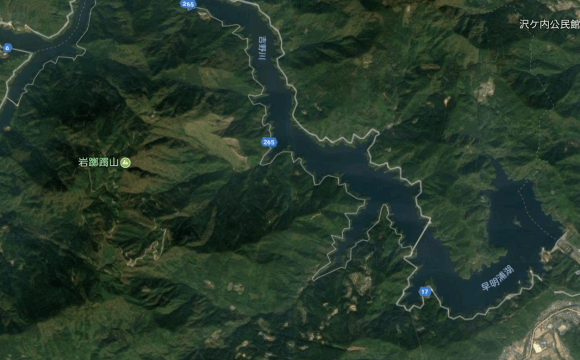
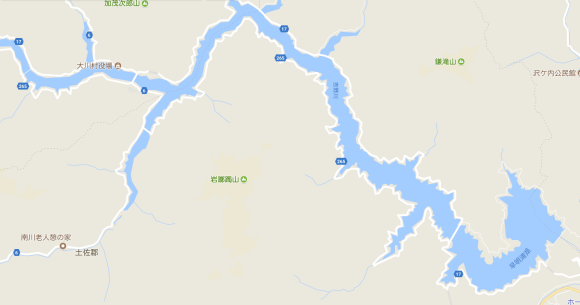
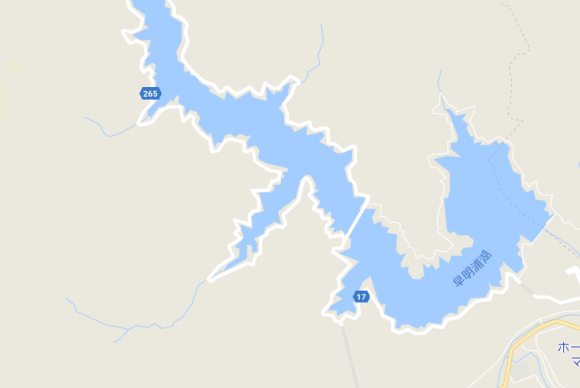
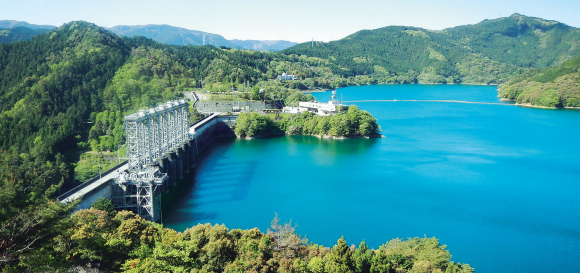
 Japan’s new luxury sightseeing train will show you part of the country most foreigners never see
Japan’s new luxury sightseeing train will show you part of the country most foreigners never see Dragon’s Maze: Japan’s built-by-hand giant labyrinth that gets bigger and harder every year
Dragon’s Maze: Japan’s built-by-hand giant labyrinth that gets bigger and harder every year Breathtakingly beautiful beach in often-overlooked part of Japan is like a scene out of Your Name
Breathtakingly beautiful beach in often-overlooked part of Japan is like a scene out of Your Name Japan has a “Totoro Tree” that looks just like the Studio Ghibli anime star【Photos】
Japan has a “Totoro Tree” that looks just like the Studio Ghibli anime star【Photos】 An overnight trip on the Sunrise Izumo, Japan’s awesome Tokyo-Shimane sleeper train【Photos】
An overnight trip on the Sunrise Izumo, Japan’s awesome Tokyo-Shimane sleeper train【Photos】 Village Vanguard’s most expensive Black Lucky Bag sets an ominous tone for 2026
Village Vanguard’s most expensive Black Lucky Bag sets an ominous tone for 2026 Pizza Hut Japan’s hot lucky bags are perfect for a New Year’s pizza party
Pizza Hut Japan’s hot lucky bags are perfect for a New Year’s pizza party Cute Anime Girls Driving Sales of Windows 8 in Japan
Cute Anime Girls Driving Sales of Windows 8 in Japan Japanese beef bowl chain Sukiya’s 2026 Smile Box lucky bag basically pays for itself
Japanese beef bowl chain Sukiya’s 2026 Smile Box lucky bag basically pays for itself Large amount of supposed human organs left in Osaka marketplace
Large amount of supposed human organs left in Osaka marketplace Book of over 200 Hayao Miyazaki Totoro pre-production illustrations, some never published, now on sale
Book of over 200 Hayao Miyazaki Totoro pre-production illustrations, some never published, now on sale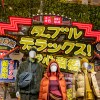 One-of-a-kind Osaka-themed Uniqlo Shinsaibashi opens
One-of-a-kind Osaka-themed Uniqlo Shinsaibashi opens Japanese office snack service begins offering vegan and gluten-free options
Japanese office snack service begins offering vegan and gluten-free options We encountered the most frightening fried chicken in Ameyokocho in Tokyo, and ate it anyway
We encountered the most frightening fried chicken in Ameyokocho in Tokyo, and ate it anyway Cup Noodle tries an authentic Jiro-style ramen, but something’s not quite right
Cup Noodle tries an authentic Jiro-style ramen, but something’s not quite right Starbucks Japan ready to get Year of the Horse started with adorable drinkware and plushies【Pics】
Starbucks Japan ready to get Year of the Horse started with adorable drinkware and plushies【Pics】 Hayao Miyazaki says Happy New Year to Studio Ghibli fans with new art for Year of the Horse
Hayao Miyazaki says Happy New Year to Studio Ghibli fans with new art for Year of the Horse 7 great places to see Mt. Fuji from without having to climb it
7 great places to see Mt. Fuji from without having to climb it We found possibly the quietest Japanese-style hotel in Tokyo’s bustling Shinjuku district
We found possibly the quietest Japanese-style hotel in Tokyo’s bustling Shinjuku district Hello Kitty Choco Egg figures are an adorable trip through three periods of Japanese pop culture【Pics】
Hello Kitty Choco Egg figures are an adorable trip through three periods of Japanese pop culture【Pics】 Japan’s oldest largetooth sawfish in captivity back on display in Mie Prefecture
Japan’s oldest largetooth sawfish in captivity back on display in Mie Prefecture Cyberpunk anime meets traditional culture in Ghost in the Shell gold leaf Japanese changing screens
Cyberpunk anime meets traditional culture in Ghost in the Shell gold leaf Japanese changing screens The best Starbucks Japan Frappuccinos we want to drink again in 2026
The best Starbucks Japan Frappuccinos we want to drink again in 2026 We revisited Sweets Paradise after a decade to see if Japan’s dessert buffet still delivers
We revisited Sweets Paradise after a decade to see if Japan’s dessert buffet still delivers 7-Eleven Japan starts new temporary luggage storage service in over 300 branches
7-Eleven Japan starts new temporary luggage storage service in over 300 branches Disillusionment at Tsukiji’s tourist-target prices led us to a great ramen restaurant in Tokyo
Disillusionment at Tsukiji’s tourist-target prices led us to a great ramen restaurant in Tokyo Starbucks teams up with 166-year-old Kyoto doll maker for Year of the Horse decorations【Photos】
Starbucks teams up with 166-year-old Kyoto doll maker for Year of the Horse decorations【Photos】 Tokyo considering law requiring more trash cans following litter increase in heavily touristed area
Tokyo considering law requiring more trash cans following litter increase in heavily touristed area Tokyo’s Tsukiji sushi neighborhood asks tour groups to stay away for the rest of the month
Tokyo’s Tsukiji sushi neighborhood asks tour groups to stay away for the rest of the month Tokyo event lets you travel back in time, for free, to celebrate 100 years since Showa era start
Tokyo event lets you travel back in time, for free, to celebrate 100 years since Showa era start Sanrio theme park in Japan announces plans to expand into a Sanrio resort
Sanrio theme park in Japan announces plans to expand into a Sanrio resort Japan may add Japanese language proficiency, lifestyle classes to permanent foreign resident requirements
Japan may add Japanese language proficiency, lifestyle classes to permanent foreign resident requirements Stamina-destroying “Paralysis Noodles” are Tokyo’s newest over-the-top ramen innovation
Stamina-destroying “Paralysis Noodles” are Tokyo’s newest over-the-top ramen innovation Survey asks foreign tourists what bothered them in Japan, more than half gave same answer
Survey asks foreign tourists what bothered them in Japan, more than half gave same answer Japan’s human washing machines will go on sale to general public, demos to be held in Tokyo
Japan’s human washing machines will go on sale to general public, demos to be held in Tokyo Japan’s deadliest food claims more victims, but why do people keep eating it for New Year’s?
Japan’s deadliest food claims more victims, but why do people keep eating it for New Year’s? We deeply regret going into this tunnel on our walk in the mountains of Japan
We deeply regret going into this tunnel on our walk in the mountains of Japan Studio Ghibli releases Kodama forest spirits from Princess Mononoke to light up your home
Studio Ghibli releases Kodama forest spirits from Princess Mononoke to light up your home Major Japanese hotel chain says reservations via overseas booking sites may not be valid
Major Japanese hotel chain says reservations via overseas booking sites may not be valid Put sesame oil in your coffee? Japanese maker says it’s the best way to start your day【Taste test】
Put sesame oil in your coffee? Japanese maker says it’s the best way to start your day【Taste test】 No more using real katana for tourism activities, Japan’s National Police Agency says
No more using real katana for tourism activities, Japan’s National Police Agency says Starbucks Japan reveals new sakura drinkware collection, inspired by evening cherry blossoms
Starbucks Japan reveals new sakura drinkware collection, inspired by evening cherry blossoms Updated cherry blossom forecast shows extra-long sakura season for Japan this year
Updated cherry blossom forecast shows extra-long sakura season for Japan this year
Leave a Reply